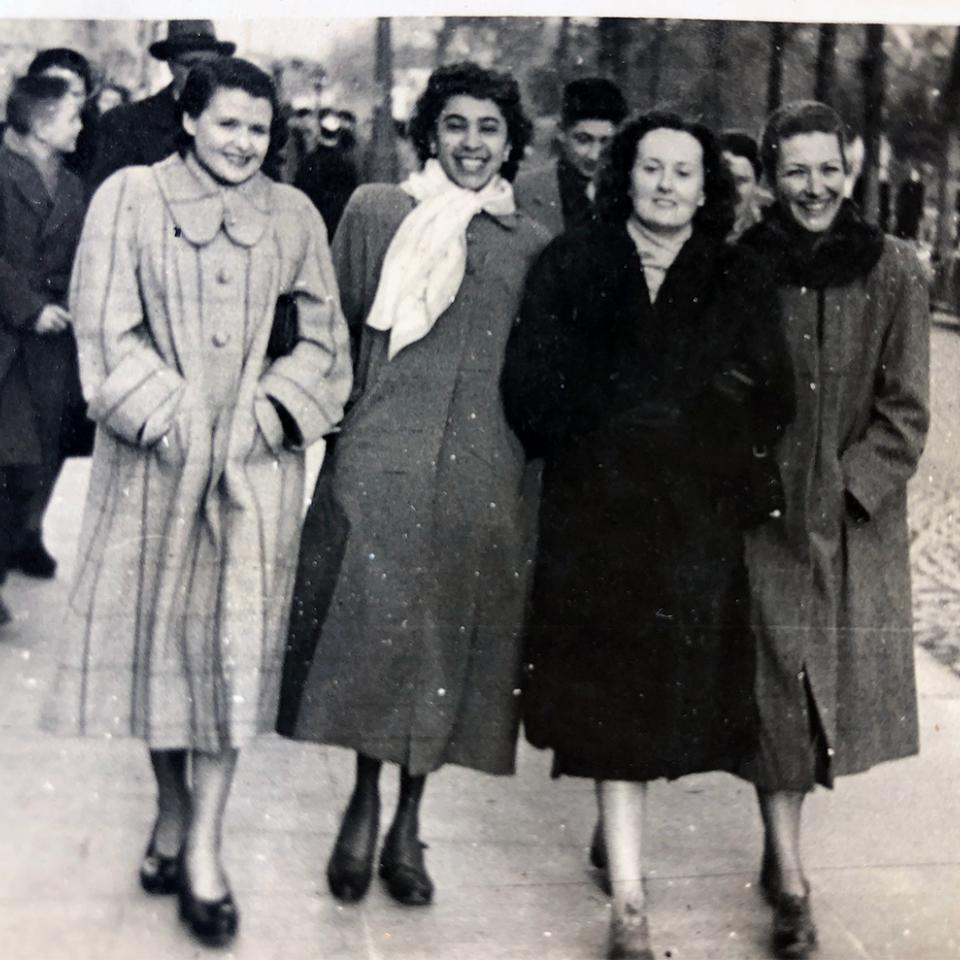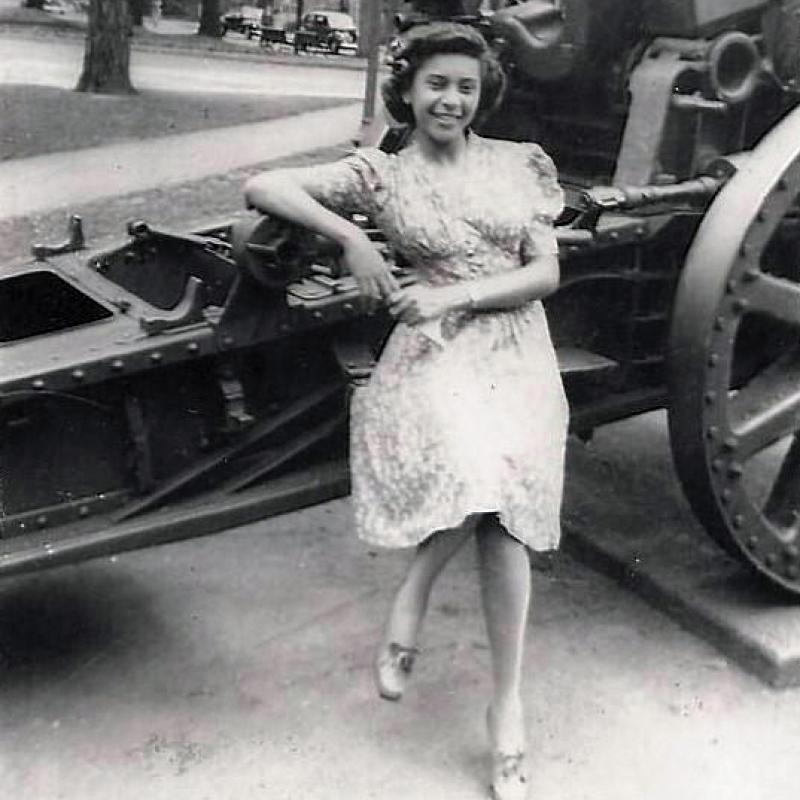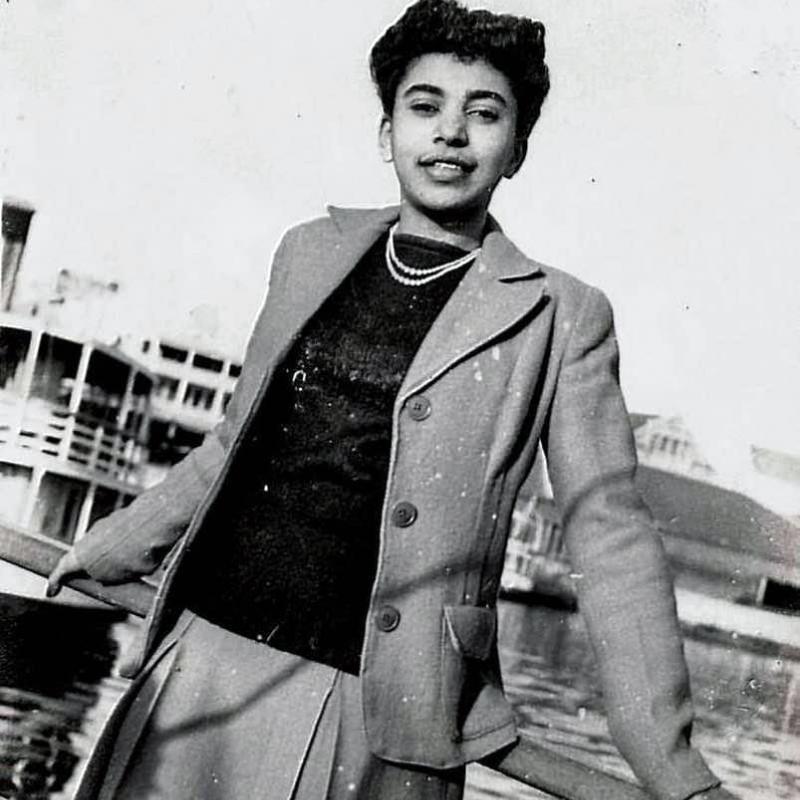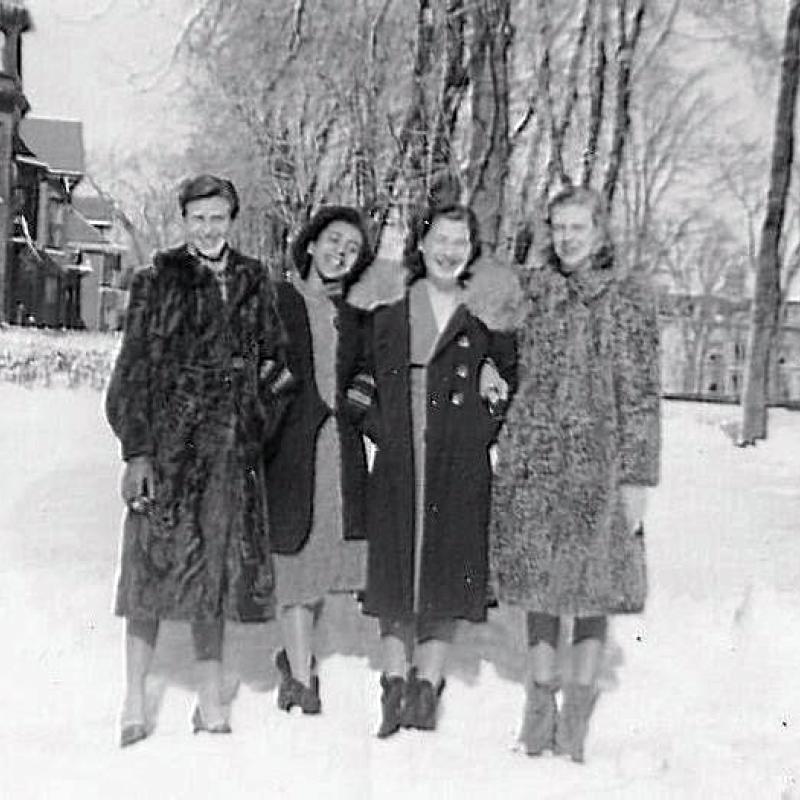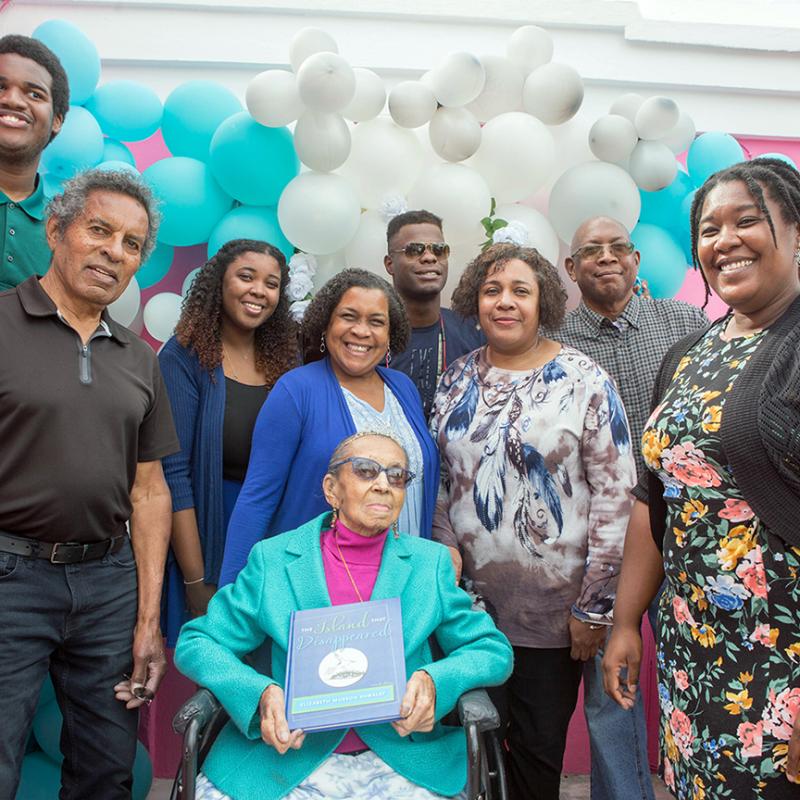Under the cover of night, her ship cut through the waves in darkness to avoid the enemy. It was 1939 and the Atlantic Ocean was no place for passenger vessels. Her trip had already been cancelled twice before but, as she cast her gaze toward starlit northern skies, she must have hoped that the third time would be the charm. This was it. She was finally leaving the warmth of Bermuda for the cold and uncertainty of Canada. But it was her dream.
Bags packed and hair straightened for a third time (“It was what you did in those days if you were going somewhere special,” she later recalled), 17-year-old Elizabeth bid goodbye to her family. War was in its infancy, she didn’t know a soul in Canada, and she had no inkling of when she would be able to return home. But she was undeterred. Armed with only the exuberance of youth, she sailed into her future.
Queen’s University was waiting.
Elizabeth arrived at Queen’s in the fall of 1939 to discover she was “the only Black girl on campus,” as one Bermuda news website recalled on her 100th birthday.
Whether she was or not, it is safe to say Elizabeth believed this to be the case, and with good reason.
“I was the only “Coloured” student at the school – and I knew of only one other Coloured family in Kingston, Ontario, itself,” she told Bermuda’s Royal Gazette last year.
People, she said, would “point and whisper in astonishment” and some were curious enough about her that they even wanted, much to Elizabeth’s surprise, to touch her skin.
“Some people in Kingston were appalled to see me,” she recalled in a 2018 interview. “They’d never seen a Black person before.”
But her three roommates – she called them her sisters – would link arms with her and say, “Come along.” These allies – Anna (Kleinsteuber) Wheal, Elnora (McCalpin) Sheppard and Ruth Cordy – were a balm to her soul. They ate in the cafeteria together, and she stayed with their families during school holidays. The sisterhood held strong – long after graduation and Elizabeth’s return home to Bermuda.
I would arrive at Queen’s 64 years later, in September 2003. Much like it was for Elizabeth, Queen’s and Kingston were unknown to me, having only migrated to Canada the year prior. And while I did not find Queen’s or Kingston to be particularly inhospitable, our experiences were perhaps not markedly different.
People may not have been appalled to see me in 2003, but it’s fair to say they were probably surprised a few times. I was not the only Black girl on campus. But I was, more often than not, the only Black person in each of my classes.
Year after year.
In fact, in my entire time at Queen’s, there were only three times when I had a Black classmate. I was never taught by a Black faculty member.
Luckily, I found community. I was active in the African Caribbean Students’ Association and in the Alma Mater Society and, briefly, in the Arts & Science Undergraduate Society (ASUS). Still, I struggled with my sense of belonging at Queen’s. I shared my struggles with Dr. Barrington Walker, a history professor who encouraged me to take ownership of the space, and to see Queen’s as mine just as much as anyone else’s. His advice would forever change my relationship to the university – it is the reason I continue to be an engaged alumna.
But knowing about Elizabeth Musson would have helped. More than six decades before me, Elizabeth not only saw Queen’s as her own, she made Queen’s her own. And she made a path for me, too.
I think most alumni know the story of Robert Sutherland, BA 1852. He was the first Black student at Queen’s and went on to become Canada’s first Black lawyer. He is credited with saving the university, which was in dire financial straits in the 1870s, by bequeathing his estate to the school – which was also in danger of being annexed by the University of Toronto. Sutherland’s gift saved Queen’s, and his remarkable story had returned to our collective imagination following the advocacy work of Greg Frankson, the first Black president of the Alma Mater Society. At a time when we were reckoning with the institution’s “culture of whiteness,” Elizabeth’s story would have been an important reminder for us all – and a personal affirmation for me – that Black people have always been here.
That Black women have been here.
And that our role in Queen’s story is not just that of saviour or mascot.
We are ordinary students who, through our time at Queen’s, are forged into exceptional beings. Some of us, like Elizabeth, are the unexceptional exceptional.
This is her story.
“I was the only “Coloured” student at the school – and I knew of only one other Coloured family in Kingston, Ontario, itself”
Elizabeth “Betty” Musson, Arts’43, was born on Long Bird Island in St. David’s, Bermuda, on April 23, 1922, the second of seven children. A brilliant student, she won a secondary school scholarship to attend The Berkeley Institute, and then later, the first Bermuda Government Scholarship for Girls – a groundbreaking scholarship open to the girl with the highest exam score, regardless of race – to attend university. She achieved all this at a time when young Black women in Bermuda were lucky to attend high school, and women attending university were still uncommon. She chose Queen’s and graduated with a bachelor’s degree in Arts in 1943, later moving to England to study for a diploma in education at London University, followed by a year studying French in Paris.
She returned to Bermuda in the mid-1940s to become a teacher, teaching French at The Berkeley Institute, Sandys Secondary School, and Warwick Secondary School. She was so fondly remembered and highly regarded by her students that Queen’s alumna Judith Brown, Arts’69, regaled me with stories of being taught by her. After retiring from teaching in 1981, she began a second career as an author, publishing The Island that Disappeared in 1995 with a second edition in 2013.
In true Queen’s spirit, Elizabeth was an activist. She served as president of the Bermuda Union of Teachers from 1948-1949 and, even after retiring, continued to support the union. In the 1950s, she was actively engaged in the Theatre Boycott to desegregate local theatres in Bermuda.
Marrying later than typical of her generation, she had a 61-year marriage to Solomon Kawaley, a fellow teacher originally from Sierra Leone. The couple married on Easter Sunday, April 13, 1952, and had three children – Ian, Kathy and Sylvia. In 1986, Betty was thrilled to take Sylvia to begin her first year at Queen’s. Sylvia graduated with a Bachelor of Arts Honours in Film Studies in 1989. Betty’s granddaughter, Katrina Kawaley, would follow in her footsteps, graduating from Queen’s in 2005.
Betty Kawaley died on May 29, 2022. The story goes that even at 100 years old, she still sang the Oil Thigh. She was a true Gael.
Let’s remember her: A bold and courageous teenager whose quiet determination and big dreams had an impact on her family, her country, and Queen’s.
